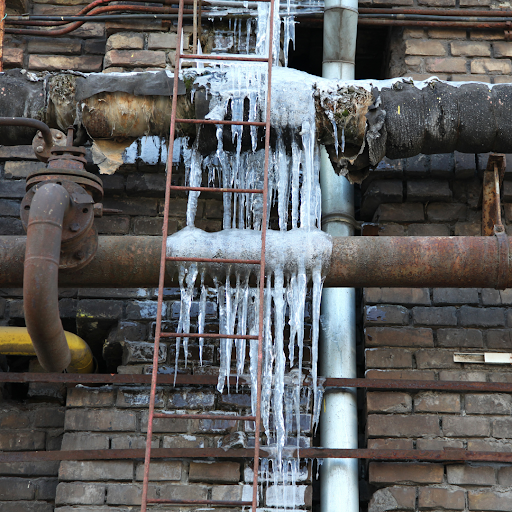Advice for Preventing Frozen Pipes in Winter: Expert Tips
Advice for Preventing Frozen Pipes in Winter: Expert Tips
Blog Article
Have you been interested in info concerning Helpful Tips to Prevent Frozen Pipes this Winter?

Winter can damage your pipes, particularly by freezing pipelines. Right here's just how to stop it from taking place and what to do if it does.
Intro
As temperatures decline, the risk of frozen pipelines boosts, potentially leading to expensive repairs and water damage. Comprehending just how to avoid icy pipes is vital for home owners in cool climates.
Prevention Tips
Insulating prone pipes
Cover pipelines in insulation sleeves or make use of warmth tape to shield them from freezing temperature levels. Focus on pipelines in unheated or external areas of the home.
Heating strategies
Keep interior areas properly heated, especially areas with pipes. Open up closet doors to enable cozy air to circulate around pipes under sinks.
How to identify frozen pipes
Seek lowered water circulation from faucets, unusual odors or sounds from pipes, and visible frost on revealed pipes.
Long-Term Solutions
Structural modifications
Take into consideration rerouting pipelines away from outside wall surfaces or unheated areas. Add extra insulation to attics, basements, and crawl spaces.
Upgrading insulation
Purchase premium insulation for pipelines, attics, and walls. Correct insulation aids preserve consistent temperature levels and decreases the threat of frozen pipelines.
Securing Outside Plumbing
Yard tubes and exterior taps
Disconnect and drain pipes garden hoses before wintertime. Set up frost-proof faucets or cover outside faucets with shielded caps.
Understanding Icy Pipes
What creates pipes to freeze?
Pipes freeze when exposed to temperature levels listed below 32 ° F (0 ° C) for prolonged durations. As water inside the pipelines freezes, it expands, putting pressure on the pipeline wall surfaces and possibly creating them to break.
Risks and damages
Frozen pipes can result in water system interruptions, residential or commercial property damages, and pricey repair services. Burst pipes can flood homes and trigger extensive architectural damages.
Indications of Frozen Water Lines
Determining frozen pipes early can stop them from rupturing.
What to Do If Your Pipes Freeze
Immediate activities to take
If you suspect icy pipes, keep taps open to alleviate stress as the ice thaws. Utilize a hairdryer or towels soaked in warm water to thaw pipelines slowly.
Verdict
Avoiding frozen pipes calls for positive measures and quick actions. By recognizing the reasons, indicators, and preventive measures, homeowners can secure their pipes during cold weather.
5 Ways to Prevent Frozen Pipes
Drain Outdoor Faucets and Disconnect Hoses
First, close the shut-off valve that controls the flow of water in the pipe to your outdoor faucet. Then, head outside to disconnect and drain your hose and open the outdoor faucet to allow the water to completely drain out of the line. Turn off the faucet when done. Finally, head back to the shut-off valve and drain the remaining water inside the pipe into a bucket or container. Additionally, if you have a home irrigation system, you should consider hiring an expert to clear the system of water each year.
Insulate Pipes
One of the best and most cost-effective methods for preventing frozen water pipes is to wrap your pipes with insulation. This is especially important for areas in your home that aren’t exposed to heat, such as an attic. We suggest using foam sleeves, which can typically be found at your local hardware store.
Keep Heat Running at 65
Your pipes are located inside your walls, and the temperature there is much colder than the rest of the house. To prevent your pipes from freezing, The Insurance Information Institute suggests that you keep your home heated to at least 65 degrees, even when traveling. You may want to invest in smart devices that can keep an eye on the temperature in your home while you’re away.
Leave Water Dripping
Moving water — even a small trickle — can prevent ice from forming inside your pipes. When freezing temps are imminent, start a drip of water from all faucets that serve exposed pipes. Leaving a few faucets running will also help relieve pressure inside the pipes and help prevent a rupture if the water inside freezes.
Open Cupboard Doors
Warm your kitchen and bathroom pipes by opening cupboards and vanities. You should also leave your interior doors ajar to help warm air circulate evenly throughout your home.

We are very drawn to How To Avoid Freezing Pipes and I really hope you enjoyed my blog entry. Sharing is caring. You never know, you may be doing someone a favor. Thanks for taking the time to read it.
Book Service Now Report this page